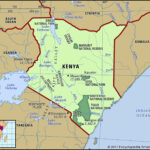Nestled in the very heart of Central Europe, Czechia, also known as the Czech Republic, is a captivating landlocked nation brimming with history, culture, and natural beauty. But Where Is Czechia exactly? This guide will pinpoint its location, delve into its geographical tapestry, and uncover key facts that make this European gem so unique.
Discovering Czechia’s Geographical Location
Czechia is strategically positioned in Central Europe, sharing borders with four other countries. To its west, you’ll find Germany, while Poland lies to the north. Slovakia forms its eastern border, and Austria completes the circle to the south. Despite its landlocked status, Czechia has historically been a crossroads of trade and cultural exchange due to its central European location.
To put it in perspective, Czechia occupies a similar latitudinal position to countries like the United Kingdom and is situated eastward on the European continent. Its capital city, Prague, is almost precisely in the center of Bohemia, the western part of the country, serving as a true heart of Czechia.
Exploring Czechia’s Diverse Landscape
The country encompasses an area of 78,866 square kilometers (30,450 square miles), roughly one-third the size of the UK. Czechia’s landscape is remarkably diverse, characterized by rolling hills, picturesque river basins, and mountain ranges.
Bohemia: The Western Region
The western two-thirds of Czechia is known as Bohemia. This region is essentially a large river basin encircled by hills and mountains. The longest river in Czechia, the Labe (Elbe in German), originates in the Krkonoše Mountains (Giant Mountains) in the northeast, bordering Poland. It carves its path southward, westward, and then northward into Germany, eventually becoming the River Elbe. The Krkonoše Mountains also proudly host Sněžka, Czechia’s highest peak, reaching 1,602 meters (5,262 feet).
Prague, the capital city, is centrally located within Bohemia on the banks of the Vltava River. The Vltava, another significant Czech river, flows northward to join the Labe just north of Prague. Its source lies in the forested Šumava hills along the southern border with Austria. To the north of Prague, the landscape transitions to the plains bordered by the Krušné Hory (Ore Mountains), named for their rich mineral deposits.
Moravia: The Eastern Region
Moravia constitutes the eastern third of Czechia. Similar to Bohemia, Moravia is also centered around a river basin, this time the Morava River. The Morava rises in the northern hills near the Polish border and flows southward to meet the Danube River at Bratislava, the capital of Slovakia. Brno, the second-largest city in Czechia, is the principal urban center of Moravia.
Czechia: Key Facts at a Glance
To further understand where Czechia stands in the world and its fundamental characteristics, here are some essential facts:
- Time Zone: GMT + 1 (GMT + 2 during summer time)
- Population: Approximately 10.5 million
- Capital: Prague (population around 1.2 million)
- EU Membership: Joined the European Union in 2004 and the Schengen Area in 2007.
- Government: Republic, established in 1993.
- Head of State: President
- Head of Government: Prime Minister
- Language: Czech (official language)
- Currency: Czech Koruna (CZK)
- Religion: While historically Roman Catholic and Protestant, a significant majority (around 79%) identify as having no religious beliefs.
- Electricity: 220 volts AC, 50Hz
A Brief Look into Czechia’s History
Czechia’s modern history is relatively young. It emerged as an independent state in 1993, following the peaceful dissolution of Czechoslovakia. Czechoslovakia itself was created in 1918 after the fall of the Austro-Hungarian Empire.
In 1989, Czechoslovakia experienced the Velvet Revolution, a peaceful transition that ended the communist regime in power since 1948. Václav Havel, a dissident playwright, became the President of Czechoslovakia and later the Czech Republic. In 1993, Czechoslovakia peacefully separated into the Czech Republic and Slovakia.
Conclusion: Czechia’s Central European Charm
Understanding where Czechia is located geographically reveals its strategic position in Central Europe, a region rich in history and culture. Its diverse landscapes, from the mountains to river basins, and its vibrant cities like Prague and Brno, make Czechia a compelling destination to explore. Whether you are interested in history, culture, or natural beauty, Czechia, in the heart of Europe, offers a wealth of experiences.


